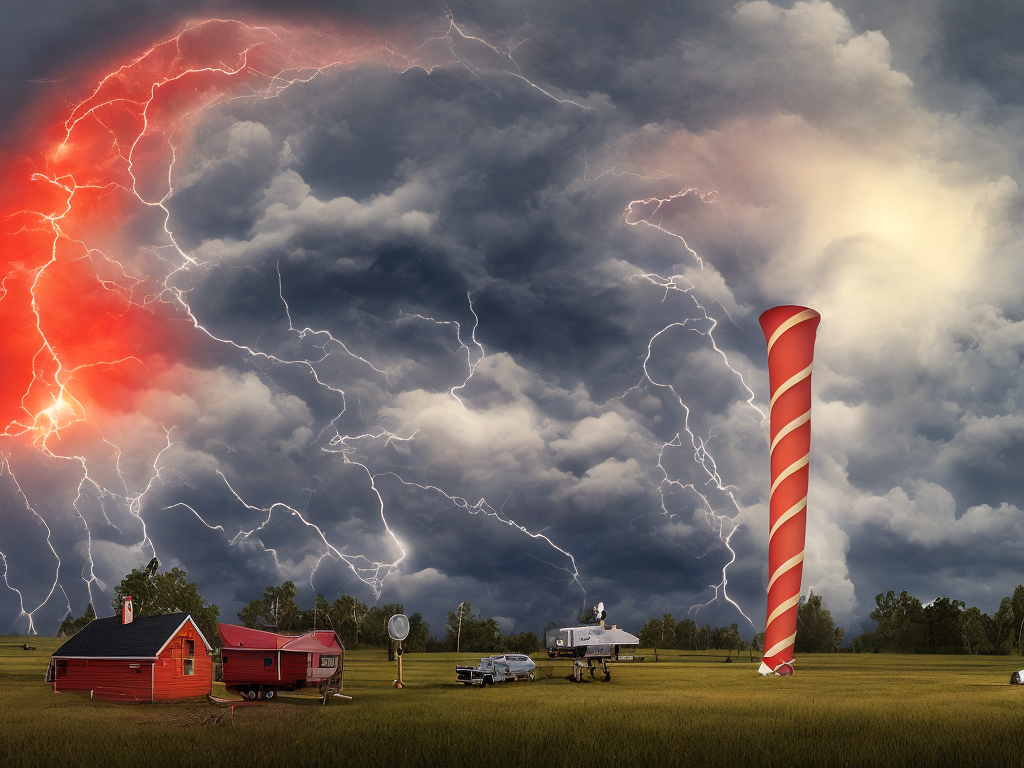
Have you ever been caught in the midst of a tornado warning or a tornado watch, and wondered what exactly is the difference between the two? Understanding the distinction between these two notices is critical for ensuring your safety in the event of a destructive twister.
A tornado watch is issued by the National Weather Service when there is a possibility of tornadoes in a specified area. This means that atmospheric conditions have the potential to produce tornadoes, and residents should stay alert and prepared in case a tornado actually forms. During a tornado watch, people should monitor the weather closely, stay tuned to local news or a weather alert app, and be prepared to take shelter immediately if a tornado warning is issued.
It is essential to note that a tornado watch does not necessarily mean that a tornado will occur, but rather that conditions are favorable for one to form. The watch usually includes a range of possible times during which the tornado may form, usually lasting between 4 and 8 hours. Residents in the watch area are encouraged to keep an eye on the sky and remain vigilant throughout this time.
On the other hand, a tornado warning is issued when a tornado or funnel cloud has been detected in a specific area. This notice indicates a high chance that a tornado is forming or is already in the area, which means that residents should seek immediate shelter. A warning is issued for a much smaller region than a watch, usually lasting around half an hour. During a tornado warning, residents should immediately find safe shelter, such as an interior basement or room, and stay there until the warning has expired.
Not responding to a tornado warning can be deadly, as tornados are capable of causing significant damage, including property destruction and loss of life. It is important to take all warnings seriously and be prepared to act quickly when one is issued.
Factors associated with tornado outbreaks
Tornadoes are most common in the United States from March to May during the springtime when atmospheric conditions are typically characterized by strong south and southeast winds. These winds transport warm, moist air from the Gulf of Mexico into the mid-latitudes, where it encounters colder, drier air from the north.
These conditions set up a perfect environment for tornadoes to form, with ample atmospheric instability, moisture, and vorticity, which are ideal for organized thunderstorms. The onset of tornado outbreaks is generally associated with changes in the upper-level jet-stream winds, which can trigger the formation of thunderstorms and ultimately tornadoes.
The highest number of tornadoes are typically observed in the central and southeastern United States, the area referred to as “Tornado Alley,” which includes parts of Texas, Oklahoma, Kansas, Nebraska, Iowa, Missouri, and Arkansas.
Effects of Tornadoes
Tornadoes are one of the most feared natural disasters in the US, as they can cause significant damage within a matter of minutes. The winds of a tornado can reach extremely high velocities, often over 200 miles per hour, which can cause cars to be tossed and buildings to be razed in a matter of seconds.
The strong winds can also create horizontal vortices called suction vortices, which can cause additional damage by lifting and carrying debris such as vehicles, trees, and buildings, and depositing them in other areas. In addition, tornadoes can create a significant amount of lightning, hail, and excessive rain associated with thunderstorms, further exacerbating the damage.
Final Thoughts
In summary, a tornado watch indicates that atmospheric conditions are favorable for a tornado to form, while a tornado warning signifies that a tornado has been sighted in a specific area, and people should immediately seek shelter. It is essential to stay tuned into local news, radio, or your weather app and keep up to date on any changes in weather conditions when a tornado watch or warning is in effect.
Remember that tornadoes can cause significant damage very quickly, so it is essential to take all warnings seriously and respond appropriately. Have a plan in place before a weather event strikes to ensure that you and your family are prepared to face whatever comes your way. Stay safe, and don’t take any chances when it comes to the powerful force of a tornado.
 Self-Instruct
Self-Instruct